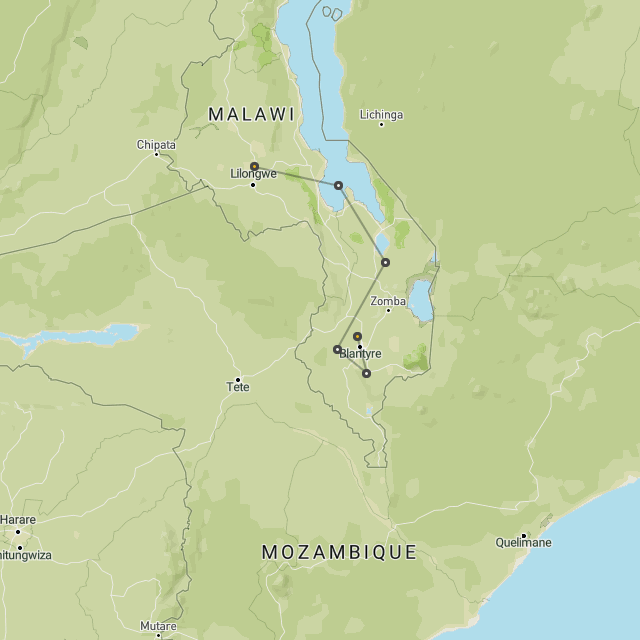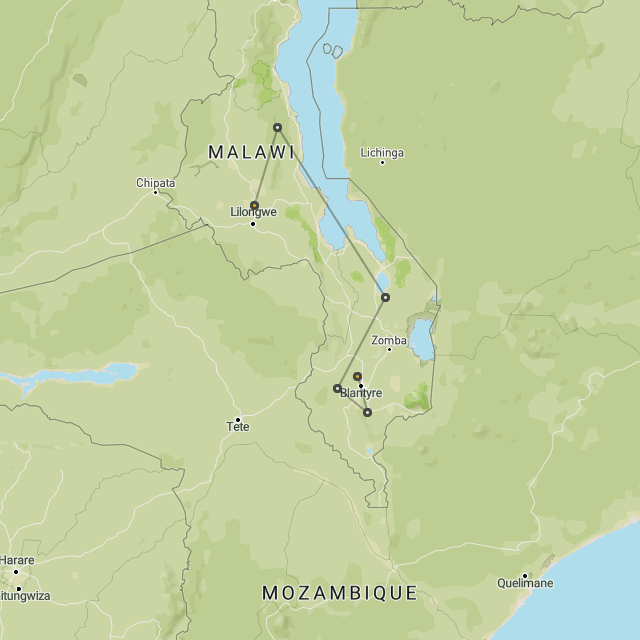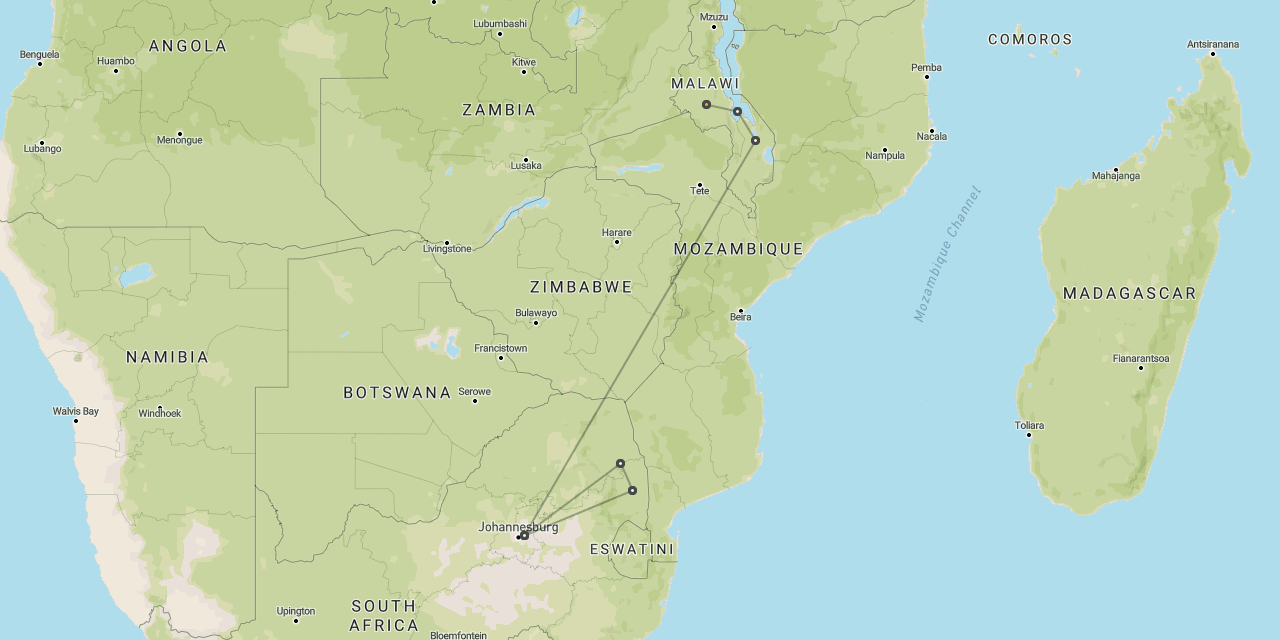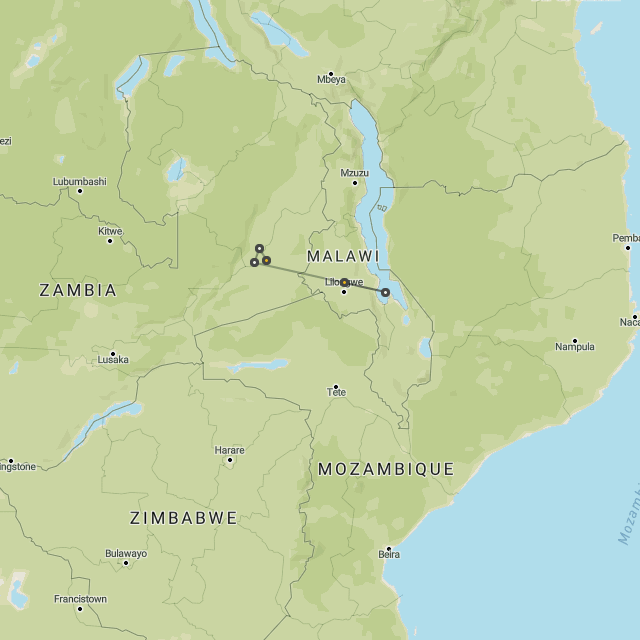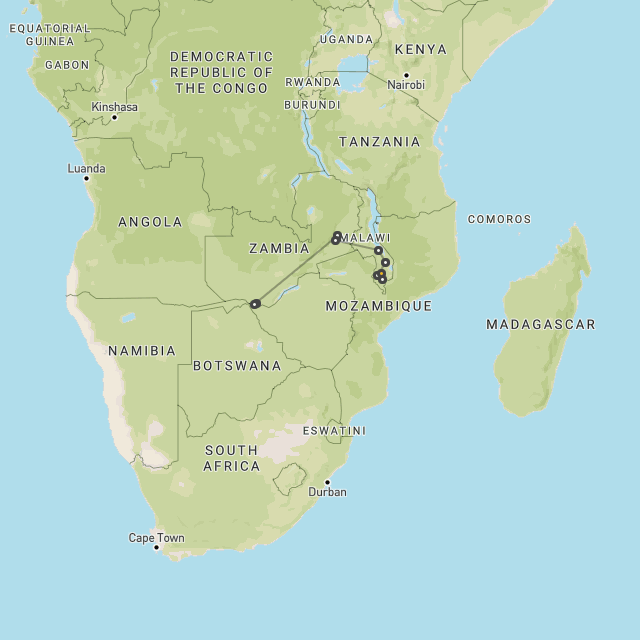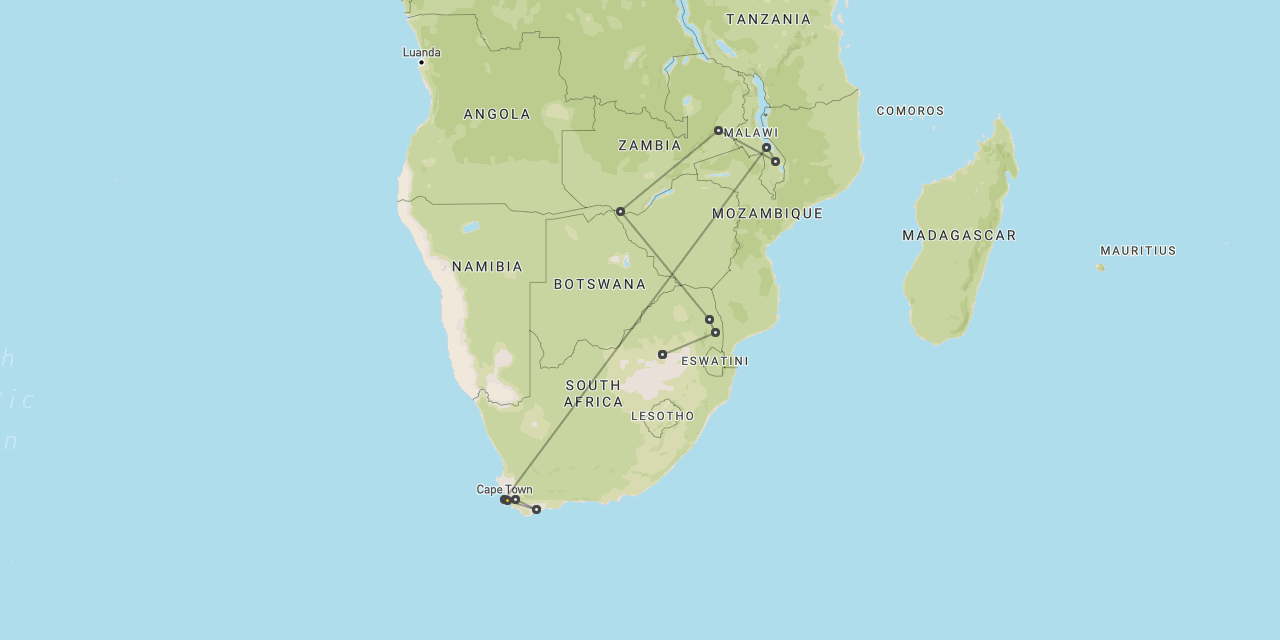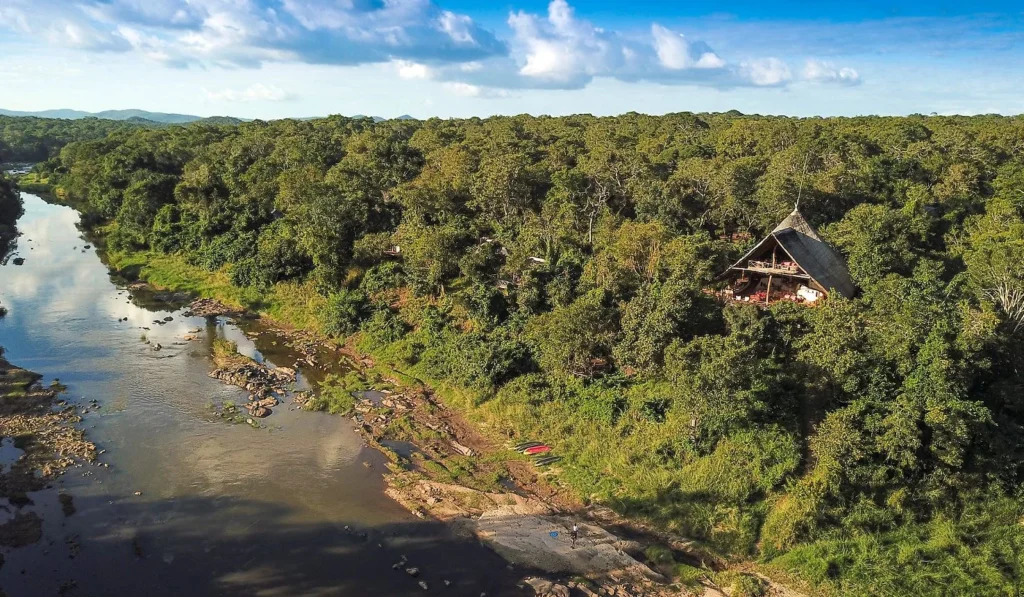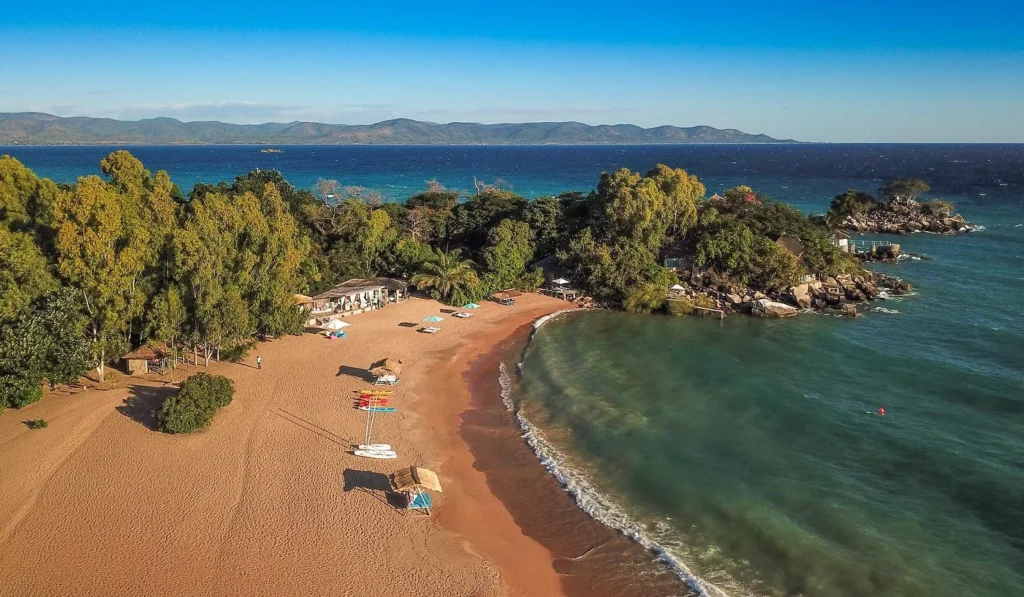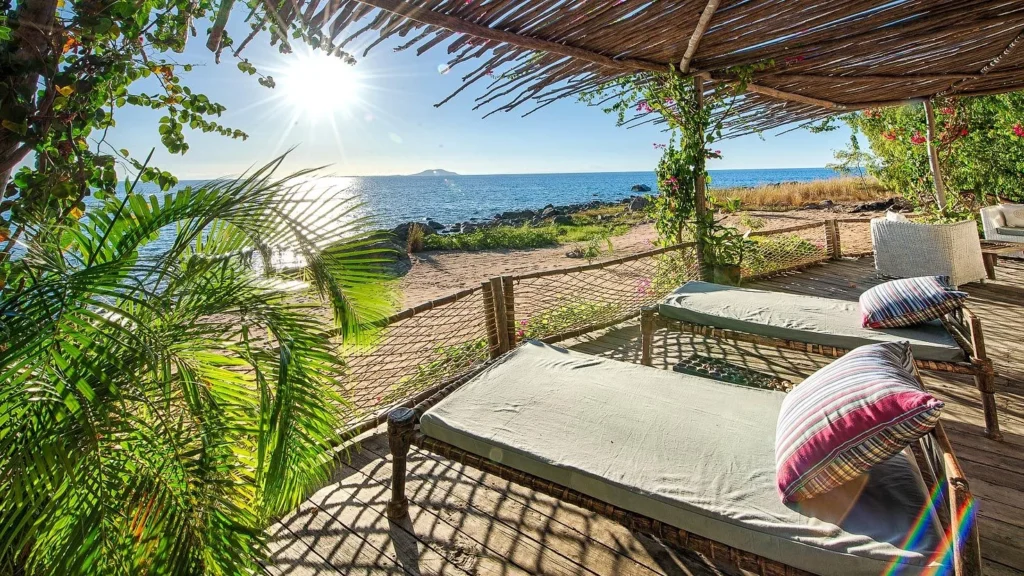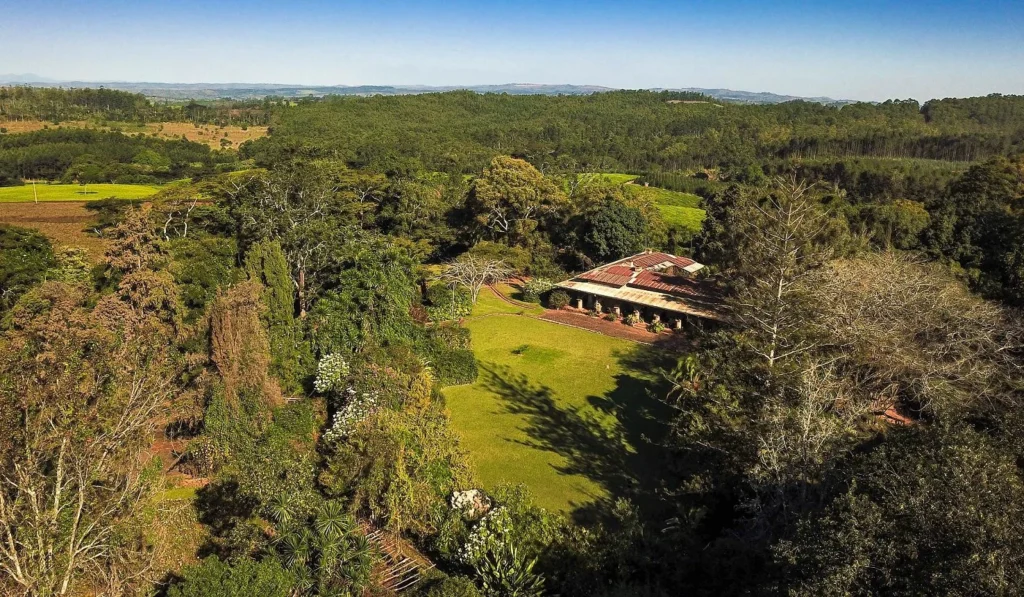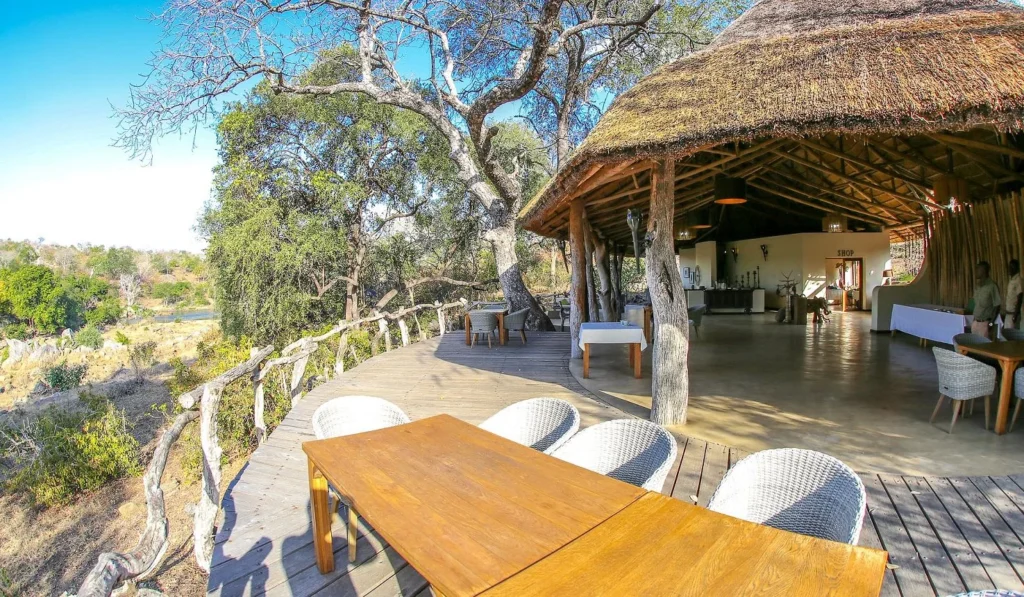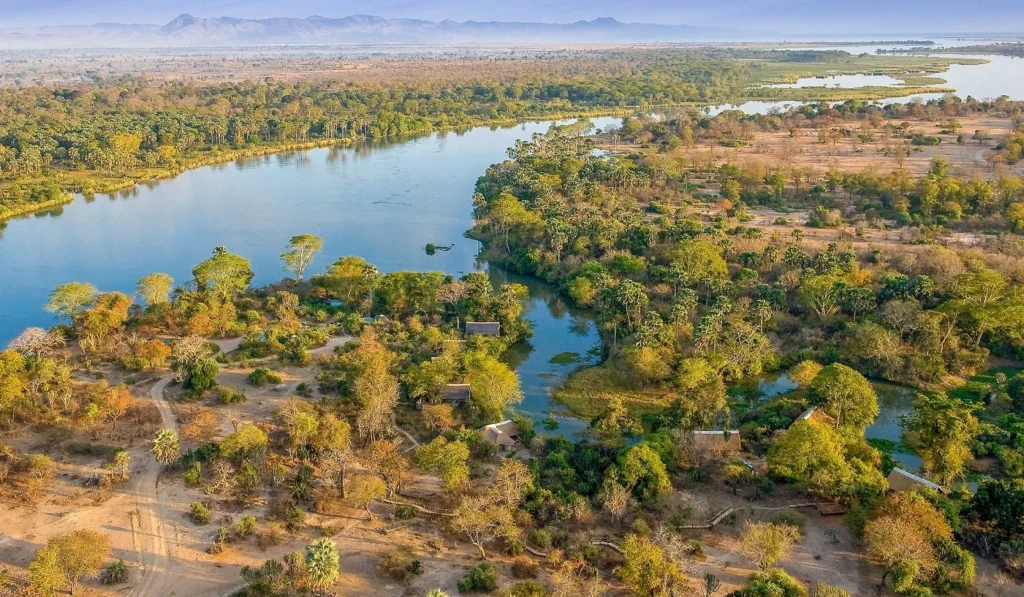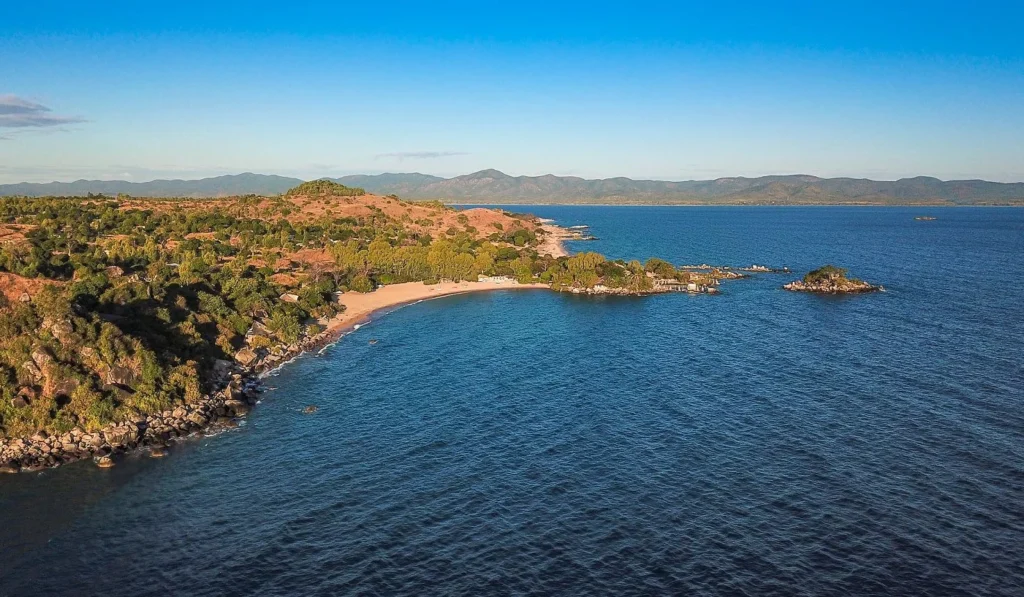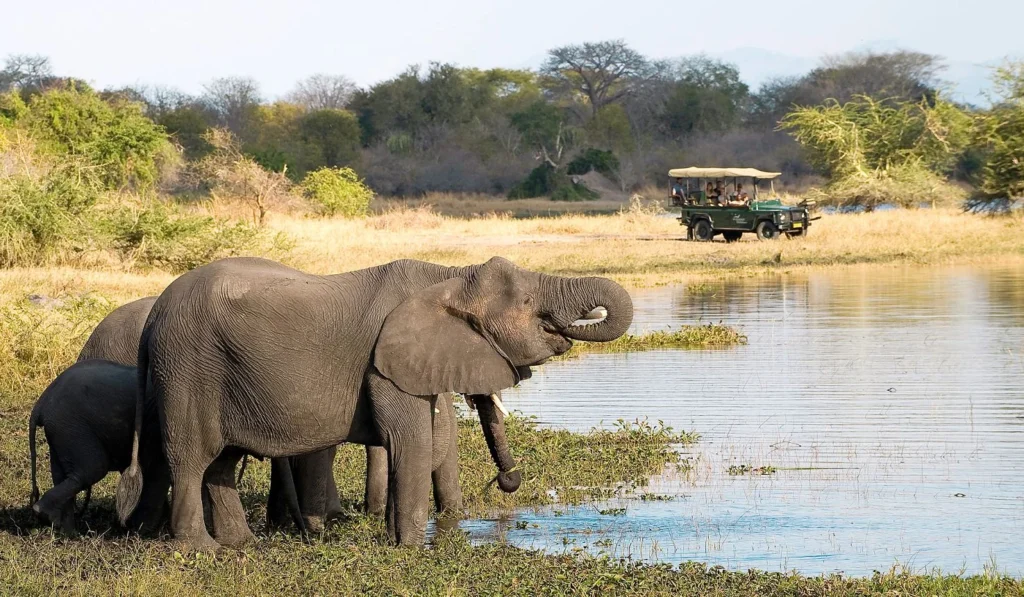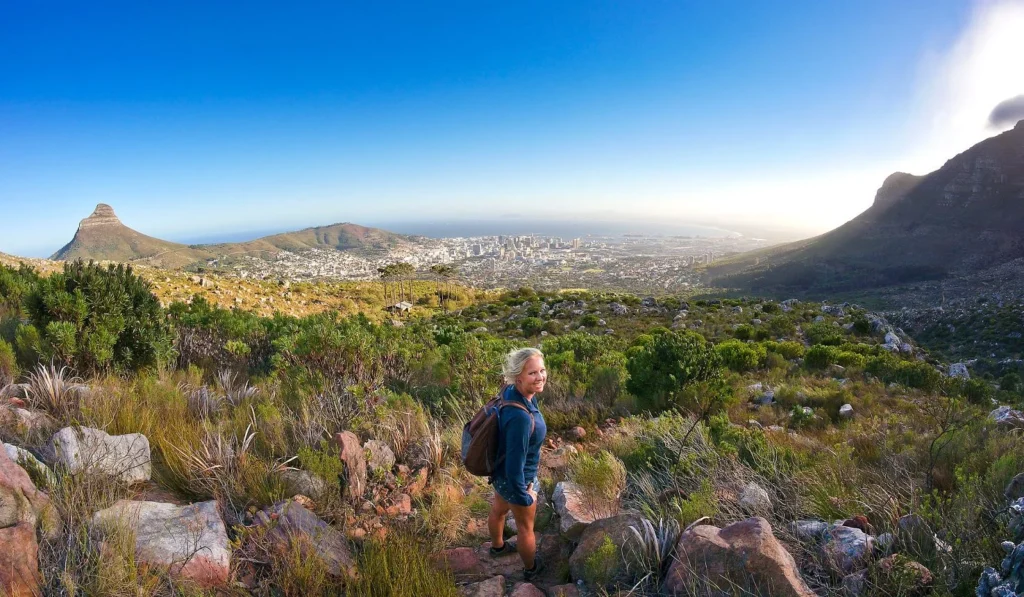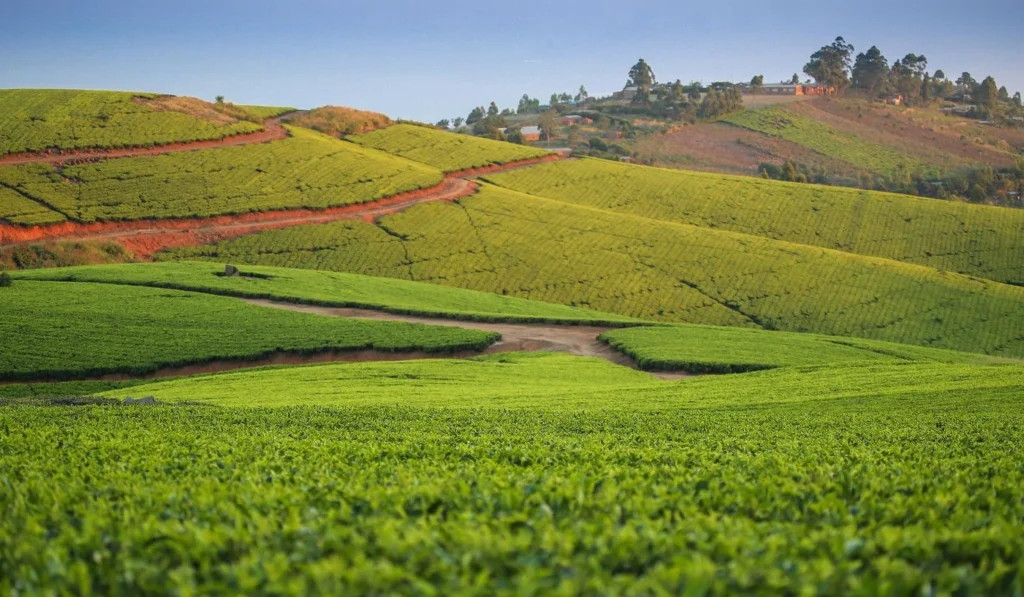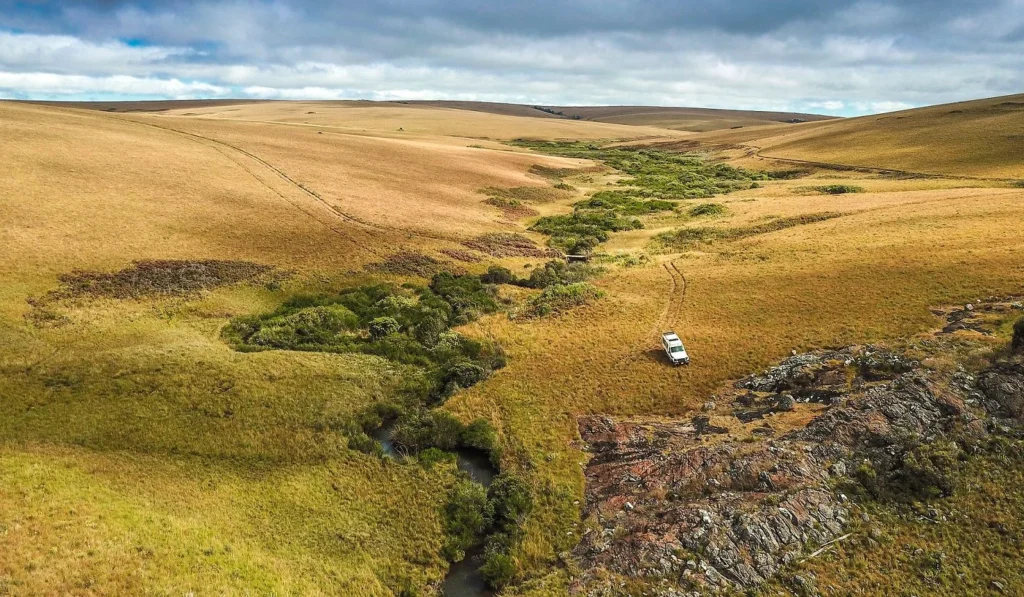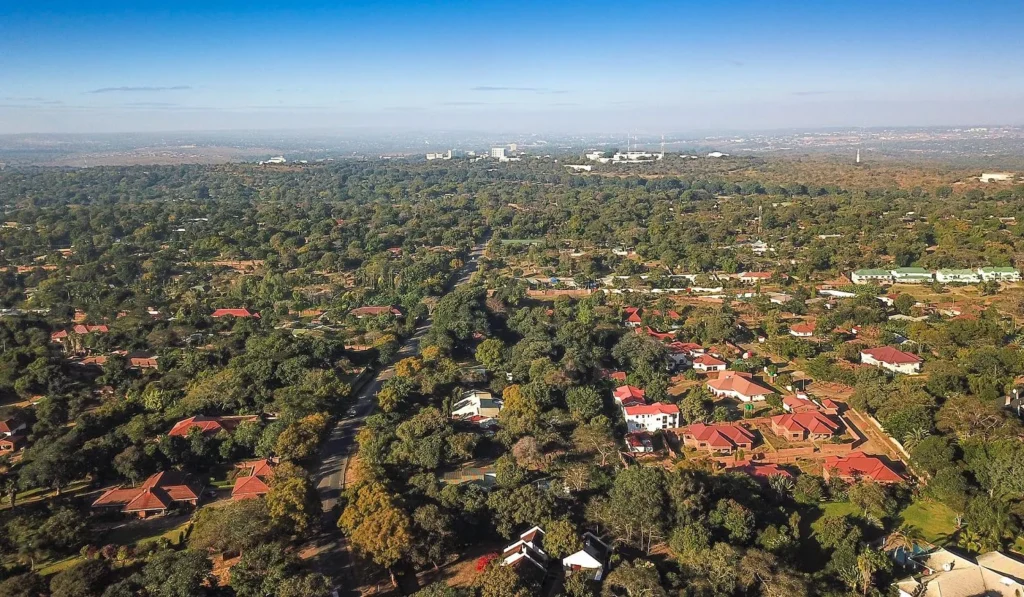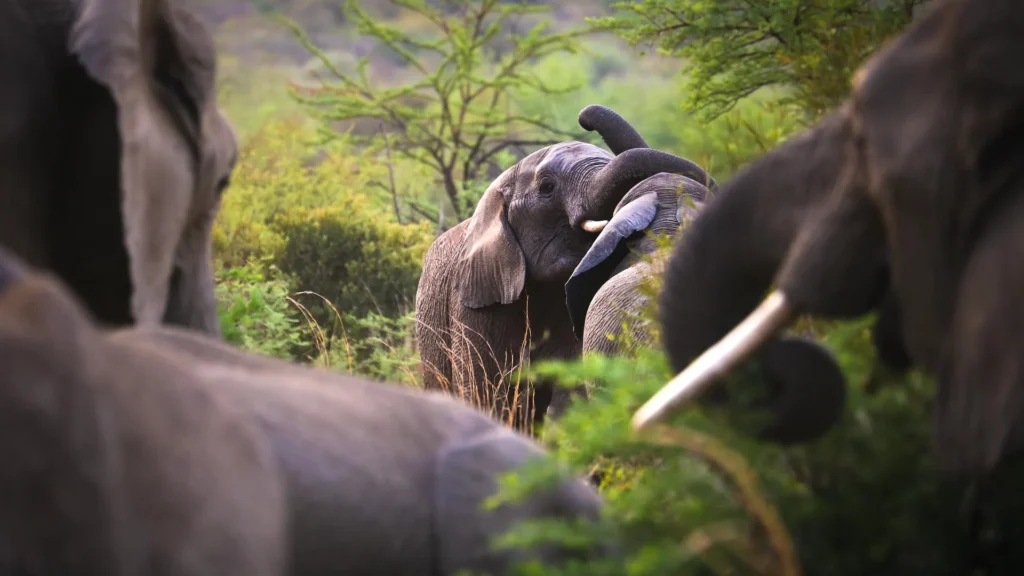
Safari to Nkhotakota
Nkhotakota
is a major conservation project
in central Malawi

a wide range of altitudes, with heavily forested slopes
At 1800 square kilometres, Nkhotakota Wildlife Reserve is the oldest and second largest wildlife reserve in Malawi and a really substantial and important conservation area.
The reserve includes a large variety of ecosystems, largely due to the range of altitudes, from the edge of the Great Rift Valley escarpment at 1638m down to the narrow plain alongside Lake Malawi at 500m.
The terrain is rugged and wild, with rough slopes and ridges being dissected by gorges and fast flowing rivers.
Much of the land is cloaked in forests, from mid-altitude rainforest, down to brachystegia and miombo woodlands.
The only open areas are the small seasonally flooded dambo grasslands and along the fringes of some rivers.
The reserve is naturally home to animals including elephants, common elands, waterbucks, southern reedbucks, cheetahs, lions, African wild dogs, baboons, black rhinos and hippopotamuses.
It is also the only location in Malawi where the rufous trident bat is found.
Some 280 species of birds have been recorded in the reserve and there are likely to be considerably more than this figure. Highlights include kingfishers, martial eagles, Taita falcons, olive-headed weavers, the Böhm’s bee-eaters, Arnot’s chats, Anchieta’s sunbirds, Böhm’s flycatchers, miombo wren-warblers, Souza’s shrikes, Chapin’s apalis, miombo rock thrushes, miombo scrub robins, black storks, palm-nut vultures and miombo double-collared sunbirds.
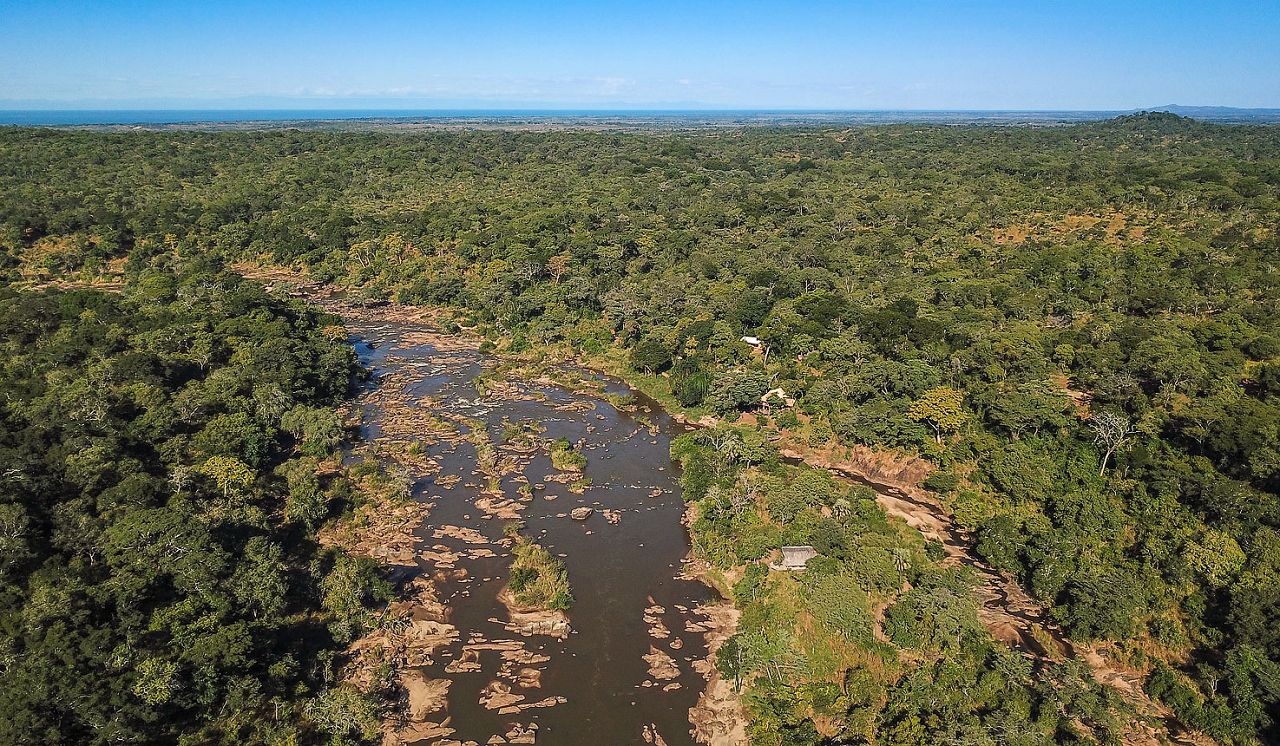
Gallery
Map
Nkhotakota tends to be included in trips very occasionally, usually for guests who are particularly interested in the area’s impressive rehabilitation project.
The usual stay duration is 3 nights.
Getting around
Visiting and travelling around Malawi is relatively straightforward.
The top locations are connected by light aircraft services, which is certainly the most convenient, but also the most expensive way to get around.
Most connections can also be made by means of private road transfers, which are rarely more than 2-3 hours duration in this relatively small country.
There are two main hubs. In the north the airport at Lilongwe is used to connect to Johannesburg, Dar es Salaam and the safari areas of South Luangwa in Zambia. In the south the airport at Blantyre is mainly used to connect to Johannesburg.
The Nkhotakota area is usually accessed by road from Lilongwe, but there is a local airstrip should you want to charter a plane.
Where to stay
At the moment there is only one decent quality lodge in the Nkhotakota area, the well intentioned Tongole Wilderness Lodge.
a lack of open areas makes for difficult wildlife viewing
let us know your thoughts about Malawi
and we will help you create the perfect safari

Extraordinary tailor-made adventures,
from earthy and edgy to easy and extravagant
From around USD 2500 per person, you set the ceiling
Sample Trips
Here are some of our popular trip shapes
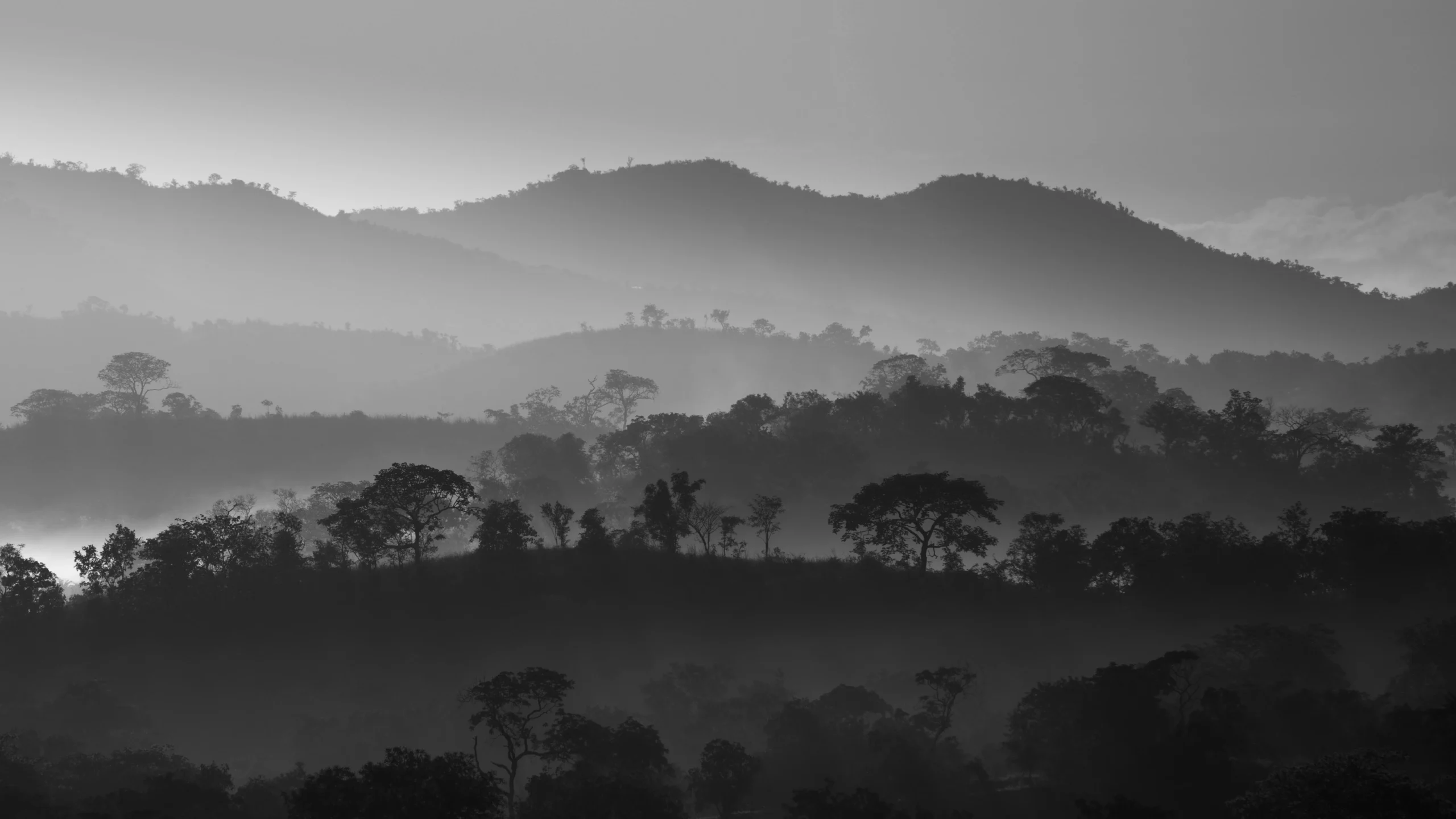
Get started on your trip
It’s never too soon to get in touch, we are here to help with every stage of your planning.
Best Lodges
We regularly inspect and photograph all of the the best lodges, to ensure that we always recommend the most suitable options
Key Locations
Take a look around related locations. Click ‘View more’ to explore locations further afield.
Where Next?
Where Next?
We offer trips to dozens of fabulous countries.
Might one of these might be your next great adventure?
Please rotate your screen.









